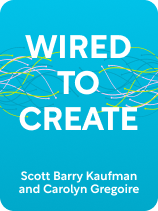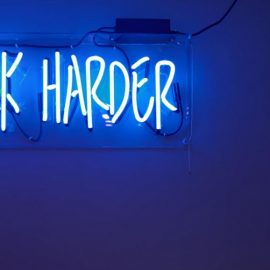

This article is an excerpt from the Shortform book guide to "Wired to Create" by Scott Barry Kaufman and Carolyn Gregoire. Shortform has the world's best summaries and analyses of books you should be reading.
Like this article? Sign up for a free trial here.
Are you an unconventional thinker? Why does unconventional thinking often go unrecognized?
The book Wired to Create by Scott Barry Kaufman and Carolyn Gregoire explains that unconventional thinking is a characteristic of creativity. However, thinking this way can pose challenges because people are averse to nonconformity.
Here’s a look at the challenges and importance of unconventional thinking.
Unconventional Thinking—Challenges & Benefits
One characteristic that the authors say creative people share is unconventional thinking. Creatives tend to think beyond standard rules and expectations that traditionally limit people. They break barriers and set new trends by refusing to conform.
The disruption that creative people cause often paves the way for massive change—for example, an inventor often needs to challenge what we know about science to create new commodities that make our lives easier or more efficient. However, the authors note that because creative work breaks norms and traditions, it often goes unrecognized initially.
This is because people typically praise conformity and resist things that are different. It’s our evolutionary drive to be risk averse—risks present danger, and newness is a risk. As a result, people need time to get used to a new concept before they can consider its merit.
For example, most people rejected the idea of automobiles when they were first invented—using a machine rather than a horse to get around seemed dangerous and scary. However, it’s hard to imagine how our current society would function without automobiles. Similarly, people may resist a new form of art if it goes against what’s traditionally considered “beautiful.” However, concepts of beauty change over time—the more we’re exposed to something, the more we’ll begin to accept and even prefer it.
| Practice Nonconformity Other creativity experts reiterate the nonconformist nature of creatives, explaining that these people often spark impactful changes despite being looked down on or ignored initially. They also recognize that being a nonconformist can be very challenging, especially because it goes against our nature to fit in. Luckily, you can take four steps to foster your unconventionality and boost your creativity despite the pressure to conform. First, understand yourself and your talents, and accept the fact that you may not fit in with the majority. You can practice this by taking accountability for your life and acting based on your own values rather than letting society and other people dictate what you should do. Second, get comfortable expressing your unconventionality—thoughts, ideas, desires—even if others won’t understand. You can practice this in small ways like saying “no” to something you don’t want to do rather than saying “yes” just to be polite. On a larger scale, you can question conventions by doing your own research to determine what you think is right and wrong, and you can express those opinions. Third, focus on building your true talents rather than trying to become proficient in conventional areas. You can practice this by dedicating time to your talents and the things you’re passionate about. Fourth, make your talents unique. Rather than imitating other people who share that talent, spend time figuring out how you can break boundaries—identify which constraints may be holding you back and what other people are doing so you can do something different. |

———End of Preview———
Like what you just read? Read the rest of the world's best book summary and analysis of Scott Barry Kaufman and Carolyn Gregoire's "Wired to Create" at Shortform.
Here's what you'll find in our full Wired to Create summary:
- What creativity truly means—and why it’s hard to define
- The 10 characteristics of creative people
- How to maximize your creative potential






